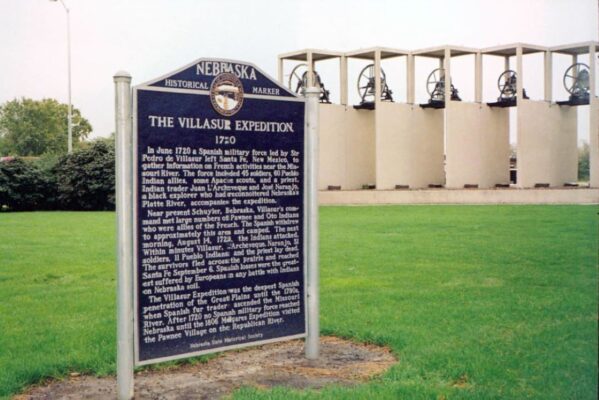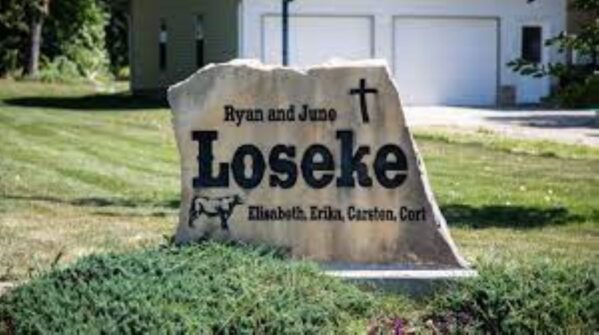The Villasur Expedition
While you are stopped, learn about: Loseke Feedyards
Columbus, Nebraska; Platte County
In the early 17th century, trade potential with Plains Native Americans elevated competition between the Spanish and the French. Upon hearing the French were trading near the Platte and Missouri rivers, the Spanish government ordered countermoves. Lieutenant-General Pedro de Villasur (pronounced vee-yah-SOOR) was appointed to lead an army into this territory. On June 16, 1720, Villasur set out from Santa Fe accompanied by forty-five Spanish soldiers, sixty Puebloan allies, an interpreter, and a priest.
On August 13, 1720, Villasur’s party, while camped near Columbus, Nebraska, met the Pawnee and Otoe, who were French allies. After failed negotiation attempts, Indians attacked the next morning — possibly with the support of French traders — and Villasur was killed along with most of his company. The thirteen surviving Spaniards returned to Sante Fe.
The Villasur expedition was the furthest official exploration of the Great Plains by Spanish explorers and also marked the end of Spanish exploration of the Nebraska country until 1806.
Log in to view these resources.
While you are stopped, learn about: Loseke Feedyards
This family operated farm near Columbus has six generations of farmers working on it! As veterinarians, Ryan and June know the importance of keeping cattle healthy. Cattle spend 4-6 months of their life at a feedyard being fed a balanced diet and receiving daily care. Raising cattle is not just a job for the Losekes – it’s a lifestyle.
Did You Know?
- The word “cow” is often used to refer to cattle in general, however, cow actually refers to female cattle.
- A cow’s hide, or skin, is about 1/8″ thick. In comparison, the thickest areas of human skin (soles of feet and palms of hands) are only 4 millimeters thick. The thick hide helps protect cattle from the cold and other elements.
- Cows, sheep, and goats are called “ruminants.” This means they have a stomach with four compartments allowing them to gain nutrients from foods that humans cannot. In addition, the digestion process creates heat to help the animal stay warm in the winter.
Log in to view these resources.
These buttons follow the default direction of each route. You can use the previous button to move in the opposite direction, or edit your team’s settings in the manager dashboard.






